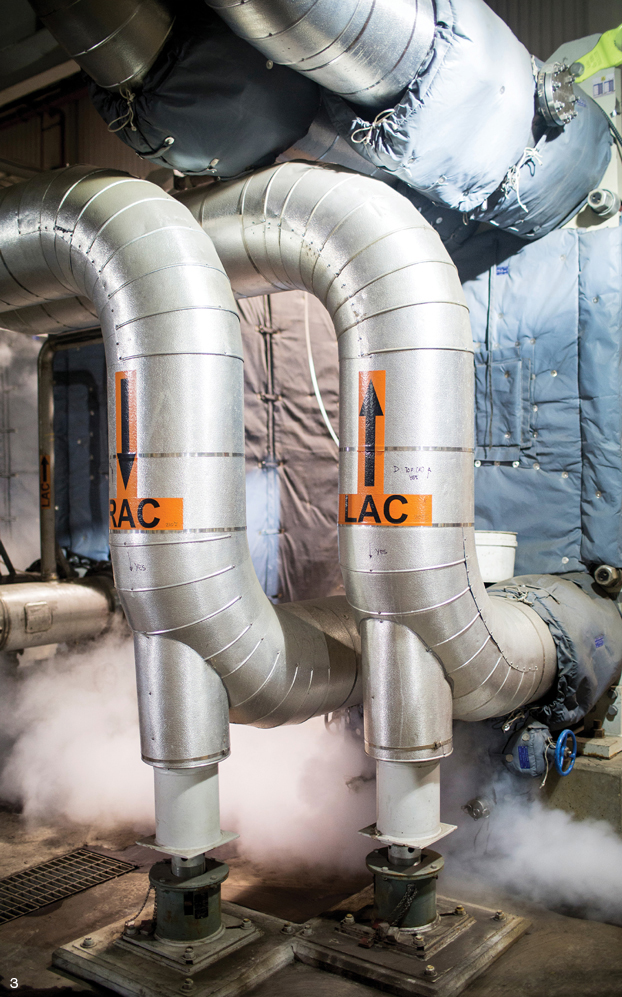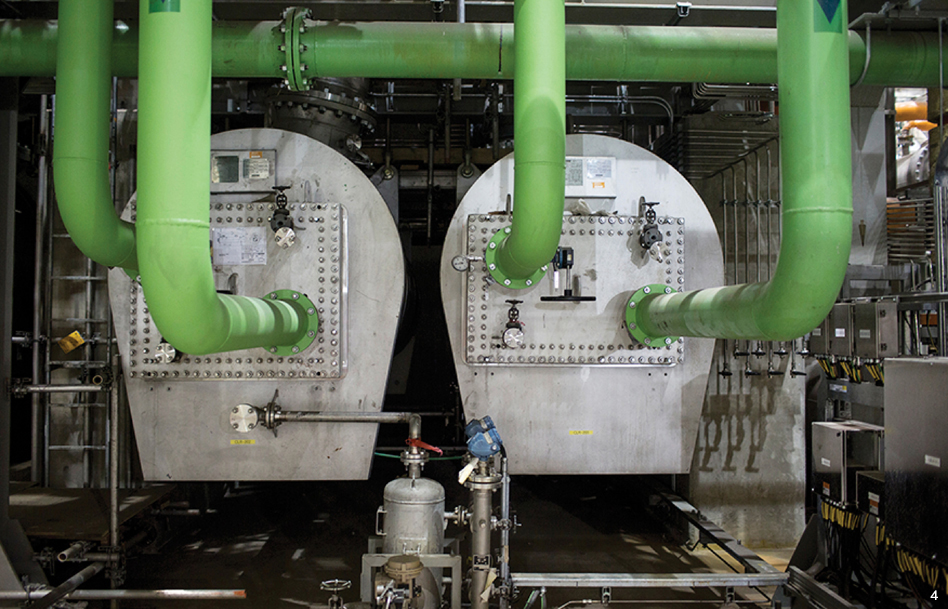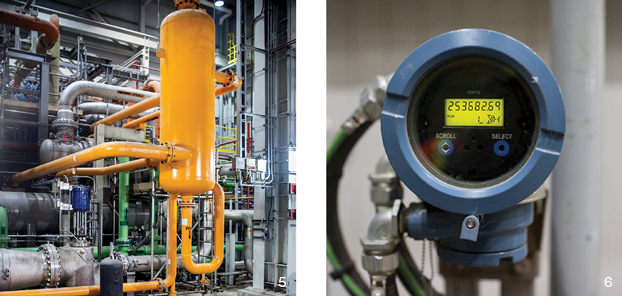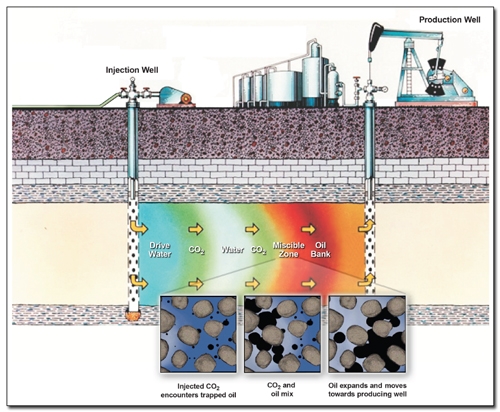Skip to comments.
A Coal Plant That Buries Its Greenhouse Gases
MIT Technology Review ^
| 12/11/2014
| Peter Fairley
Posted on 12/12/2014 5:14:05 AM PST by thackney
Boundary dam, a power plant in Estevan, Saskatchewan, is the first commercial coal-fired plant to capture carbon dioxide from its emissions, compress the gas, and bury it underground. The plant demonstrates that so-called carbon capture and storage (CCS) can work at a large scale—a crucial achievement given that CCS could play a significant role worldwide in reducing the greenhouse-gas emissions that contribute to climate change.
Right now only two other CCS power-plant projects are under construction, both of them in the United States. That’s because CCS carries a hefty price tag: SaskPower invested $1 billion to equip one of the four generators at its Boundary Dam site for carbon capture. What’s more, the process reduces the 160-megawatt plant’s electricity output by about 20 percent, meaning it may cost SaskPower more per kilowatt-hour to run CCS than the 12 cents it gets for selling the electricity.
SaskPower makes up for this in large part by selling much of the captured carbon dioxide to the Calgary-based oil producer Cenovus, which uses it to boost output from its maturing oil wells nearby.
CCS should get cheaper over time. The Intergovernmental Panel on Climate Change, the panel of climate scientists convened by the United Nations, projects that technology upgrades and economies of scale should reduce the price of adding CCS to coal plants to just one-third of what SaskPower spent at Boundary Dam. If so, CCS-equipped coal plants could deliver electricity more cheaply than some other low-carbon sources, including offshore wind power and large solar farms.
SaskPower says that with the lessons it’s learned so far, it could now build a similar CCS project for $200 million less, and that it may soon go forward with CCS at two other aging coal generators at Boundary Dam. It also hopes to help other power companies develop expertise in the technology.
Still, coal plants around the world generally have little incentive to follow suit. In SaskPower’s case, Canadian regulations helped force the company’s hand; that fact, plus the availability of a local buyer for carbon dioxide, makes SaskPower’s effort somewhat unusual. What might be needed elsewhere is a way for utilities to pass along CCS costs to customers, just as many do now to pay for renewable energy sources. Another approach would be to tax carbon dioxide emissions, creating an incentive to bury the gas instead.
The technology must also be proven to work over the long term. SaskPower buries some gas in a saline aquifer on its site. To make sure it stays put, the company has installed above-ground gas sensors plus a seismic sensing array to track subsurface movement.
The United Nations climate panel says similar technology must be installed at all 7,000 existing coal power plants worldwide by 2050 to keep warming below 2 °C, a widely cited threshold for avoiding severe climate change. Meanwhile, new coal plants are still being built, especially in China and India. With coal plants expected to provide one-quarter of the world’s energy supply in 2040, SaskPower could help test the feasibility and safety of burying billions of tons of carbon dioxide emissions.
TOPICS: Canada; News/Current Events
KEYWORDS: co2; coal; energy; greenhousegas; woc
Navigation: use the links below to view more comments.
first 1-20, 21-40, 41 next last

1. Coal from a nearby strip mine is pulverized for burning.

2. Ductwork (bottom left) carries flue gas to an adjacent carbon capture facility. There, it bubbles through a 52-meter-high column filled with a solution containing chemicals called amines, which absorb 90 percent of the carbon dioxide. The rest vents from the facility.

3. The carbon-rich amine solution (RAC) is piped to a heater that removes CO2; the lean solution (LAC) is piped back to repeat the process.

4. Cooling water travels through the green pipes into a chamber that helps cool carbon dioxide as part of a compression process.

5. The carbon dioxide is turned into a supercritical liquid inside this 15-megawatt compressor. Approximately 3,000 tons of carbon dioxide is captured and compressed every day.
6. A gauge at the CCS plant indicates the flow rate of carbon dioxide.

7. Most of the carbon dioxide travels 65 kilometers to an oilfield (shown here), where it’s injected to help boost production. But some is injected at SaskPower’s site.

8. At the SaskPower site, a wellhead delivers carbon dioxide to its resting place, a saline aquifer 3.4 kilometers underground.
1
posted on
12/12/2014 5:14:06 AM PST
by
thackney
To: Squawk 8888
2
posted on
12/12/2014 5:15:27 AM PST
by
thackney
(life is fragile, handle with prayer.)
To: thackney
“7. Most of the carbon dioxide travels 65 kilometers to an oilfield (shown here), where it’s injected to help boost production. But some is injected at SaskPower’s site. “
LOL. That’s gotta give the greenies night tremors.
3
posted on
12/12/2014 5:19:31 AM PST
by
Lurkina.n.Learnin
(It's a shame nobama truly doesn't care about any of this. Our country, our future, he doesn't care)
To: thackney
Harvesting a harmless, naturally occurring, inert gas and disposing it underground.
Tell me the engineers who designed this don’t shake their heads and laugh at the climate alarmists.
4
posted on
12/12/2014 5:19:57 AM PST
by
lurk
To: thackney
20 years from now when it goes up it will be one heck of a “kabloey”!
5
posted on
12/12/2014 5:20:40 AM PST
by
camle
(keep an open mind and someone will fill it full of something for you)
To: thackney
wasn’t this proposed for a plant in Texas but cancelled some time back?
6
posted on
12/12/2014 5:22:51 AM PST
by
bert
((K.E.; N.P.; GOPc.;+12, 73, ..... Obama is public enemy #1)
To: camle
7
posted on
12/12/2014 5:22:52 AM PST
by
thackney
(life is fragile, handle with prayer.)
To: lurk; thackney
:: Tell me the engineers who designed this don’t shake their heads and laugh at the climate alarmists. ::
How about if I tell you that the engineers are laughing, alright. At the bank as they cash their paychecks at a clip of $150+K per year.
CO2 engineers love Al Gore!
To: bert
9
posted on
12/12/2014 5:27:23 AM PST
by
thackney
(life is fragile, handle with prayer.)
To: thackney
Canadian Fracmaster was doing this back in the 80s.
CO2 with a heavy distillate.
To: bert
11
posted on
12/12/2014 5:28:43 AM PST
by
thackney
(life is fragile, handle with prayer.)
To: thackney
This is sad for me to read. All of this ingenuity, effort and expense in support of a complete hoax.
12
posted on
12/12/2014 5:29:47 AM PST
by
Blennos
To: Eric in the Ozarks
Fracturing or sweeping the reservoir like this?
13
posted on
12/12/2014 5:30:17 AM PST
by
thackney
(life is fragile, handle with prayer.)
To: thackney
A solution to a nonexistent problem.
14
posted on
12/12/2014 5:34:04 AM PST
by
The Great RJ
(Pants up...Don't loot!)
http://www.co2.no/default.asp?uid=54 The use of CO2 for EOR appears to have initiated in the United States during the early 1960´s, as documented in one article we have come across from 1964 in the Journal of Petroleum Technology by Ramsay and Small entitled “Use of Carbon Dioxide for Water Injectivity Improvement”. Much has happened since that early era.
Injection of CO2 is based upon the mechanism of miscibility whereby the CO2 mixes with oil remaining in the reservoir at the right pressure and temperature and helps improve oil production in the final (tertiary) phase of oil reservoir life. Essentially the CO2 allows operators to recover oil that would normally be left in the ground when a field reaches the end of its conventional (post-waterflood) economic life.
World-wide there are an estimated ~100 registered CO2-floods that in 2006 produced around ~250,000 bpd, but almost ~90 of these are located in the USA and Canada, primarily in the regions illustrated by the map below covering the Permian Basin of Texas and New Mexico, the Bighorn Basin of Wyoming, the Rangely Field of Colorado and the Mississippi Salt Basin. In North Dakota CO2 from the Great Plains Coal Gasification project is injected into the light oil field at Weyburn in Saskatchewan in Canada.

...Furthermore, the anthropogenic sources in East Texas are geographically well located between the existing CO2-floods in the Permian Basin and potential EOR activity that will also evolve in the Gulf of Mexico.

15
posted on
12/12/2014 5:34:15 AM PST
by
thackney
(life is fragile, handle with prayer.)
To: Blennos; The Great RJ
It also is increasing oil production.
16
posted on
12/12/2014 5:34:56 AM PST
by
thackney
(life is fragile, handle with prayer.)
To: Eric in the Ozarks
17
posted on
12/12/2014 5:36:25 AM PST
by
thackney
(life is fragile, handle with prayer.)
To: thackney
Total and complete waste of $$$$$$$$$$$$$$$$$$$$$$$$.
But-—$$$$$ are INFINITE and we can just print more, and more, and more, and more..................
18
posted on
12/12/2014 5:37:13 AM PST
by
Flintlock
(Soapbox failed, Ballotbox didn't work--the BULLET BOX is what's left to us.)
To: thackney
A Coal Plant That Buries Its Greenhouse Gases... Isn't this very unfair to 'Rat voters? If I were a 'Rat voter I'd be up in arms... guys I voted for doing this to me.
19
posted on
12/12/2014 5:40:47 AM PST
by
C210N
(When people fear government there is tyranny; when government fears people there is liberty)
To: thackney
so we’re due for one heck of a planetary fart?
20
posted on
12/12/2014 5:43:53 AM PST
by
camle
(keep an open mind and someone will fill it full of something for you)
Navigation: use the links below to view more comments.
first 1-20, 21-40, 41 next last
Disclaimer:
Opinions posted on Free Republic are those of the individual
posters and do not necessarily represent the opinion of Free Republic or its
management. All materials posted herein are protected by copyright law and the
exemption for fair use of copyrighted works.
FreeRepublic.com is powered by software copyright 2000-2008 John Robinson







